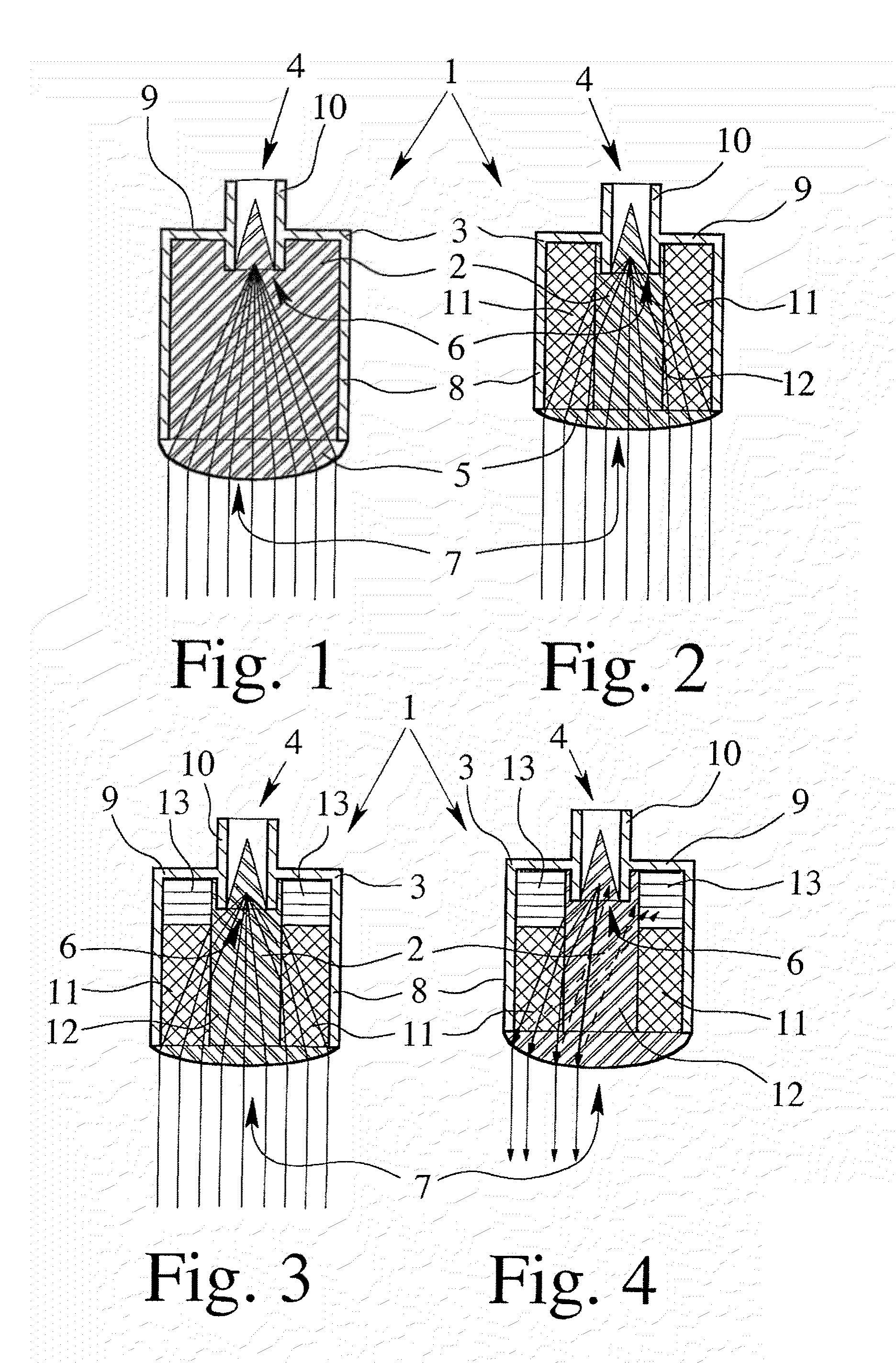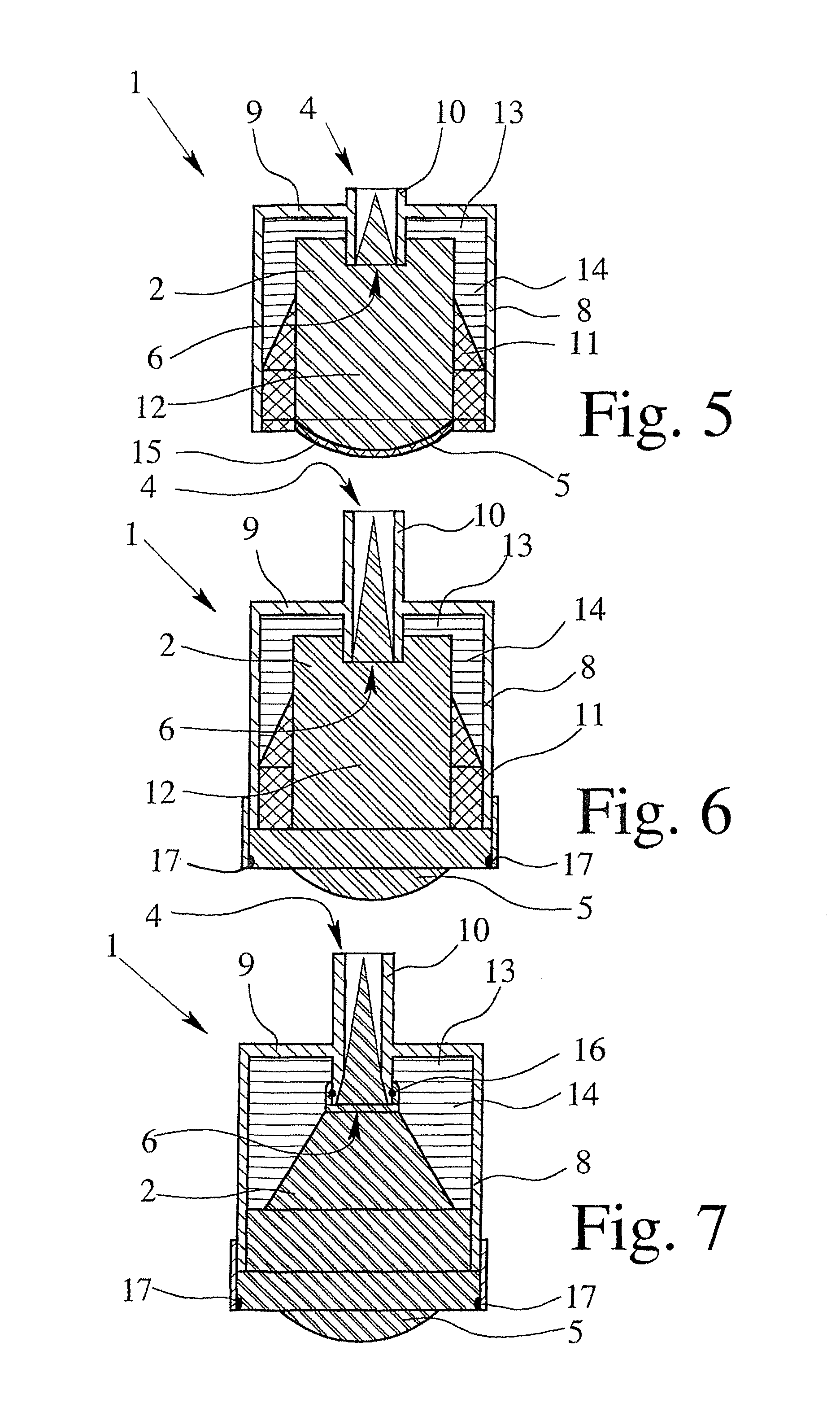Dielectric antenna
a dielectric antenna and antenna technology, applied in the direction of antennas, liquid/fluent solid measurements, instruments, etc., can solve the problems of contradictory requirements, known dielectric antennae have a further disadvantage, and configuration suitable for hygienic purposes can only be poorly implemented, for exampl
- Summary
- Abstract
- Description
- Claims
- Application Information
AI Technical Summary
Benefits of technology
Problems solved by technology
Method used
Image
Examples
Embodiment Construction
[0040]FIG. 1 shows a first, very simple embodiment of a dielectric antenna 1 according to the invention having a dielectric body 2 and an electrically conductive sheath, wherein the dielectric body 2 can be struck by electromagnetic radiation and the electromagnetic radiation—at least partially—can be emitted from the dielectric body 2 via a lens-shaped radiation section 5. The conductive sheath 3 encompasses the dielectric body 2 from the supply section 4 to the radiation section 5. A supply opening 6 is provided in the supply section 4 of the conductive sheath 3 and a radiation opening 7 is provided in the area of the radiation section of the conductive sheath, so that the dielectric body 2 can be struck by electromagnetic radiation.
[0041]The dielectric antenna shown in FIG. 1 is characterized—as are all of the dielectric antennae shown in the other figures—in that the dielectric body 2 essentially has the cross section of the radiation opening 7 in the area of the supply section ...
PUM
| Property | Measurement | Unit |
|---|---|---|
| dielectric | aaaaa | aaaaa |
| area | aaaaa | aaaaa |
| permittivity | aaaaa | aaaaa |
Abstract
Description
Claims
Application Information
 Login to View More
Login to View More - R&D
- Intellectual Property
- Life Sciences
- Materials
- Tech Scout
- Unparalleled Data Quality
- Higher Quality Content
- 60% Fewer Hallucinations
Browse by: Latest US Patents, China's latest patents, Technical Efficacy Thesaurus, Application Domain, Technology Topic, Popular Technical Reports.
© 2025 PatSnap. All rights reserved.Legal|Privacy policy|Modern Slavery Act Transparency Statement|Sitemap|About US| Contact US: help@patsnap.com



